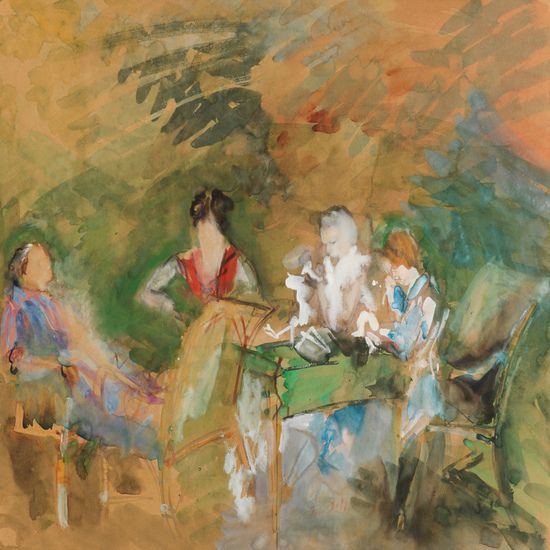Jean Dufy
From 1916 to 1934, Jean will realize, for the Theodore Haviland porcelain of Limoges, decorations - floral and animal nature - which will be worth to him, during the International Exhibition of Modern Decorative and Industrial Arts in 1925, a gold medal for the service "Châteaux de France".
His works were shown in public at successive exhibitions in Paris (Salon d'Automne at the Grand Palais des Champs-Élysées in 1920, 1923, 1924, 1927 and 1932, Galerie Bing & Cie in 1929) and in New York (Balzac Galleries in 1930, Perls Galleries in 1938).
For the 1937 World's Fair, the general manager of the Compagnie Parisienne de Distribution d'Électricité commissioned his brother, Raoul Dufy, to decorate the electricity pavilion entrusted to the architect Robert Mallet-Stevens. Jean will help him realize a vast fresco in the glory of electricity, on a surface of six hundred square meters: The Electricity Fairy.
He stayed in Limousin and Touraine, in the years 1939-1948, regions that inspired him to create works, especially landscapes and village scenes (for example in Preuilly-sur-Claise). The last years (1950-1960) are devoted to travels, mainly in Europe and North Africa.
Recognized painter, regularly exhibited in Paris and in the United States, integrated in the collections of the most prestigious American museums such as the Art Institute of Chicago or the MoMA of New York, Jean Dufy died on May 12, 1964 in La Boissière, hamlet of the village of Boussay where he had settled in 1948. His death came two months after that of his wife Ismérie.
|



